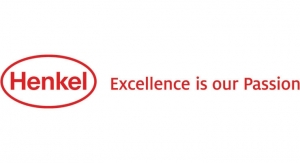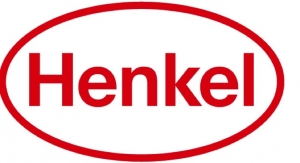Dr. Christian Kirsten, Corporate Senior Vice President Transport & Metal Head of Adhesive Technologies Asia-Pacific, Henkel03.01.16
Dr. Christian Kirsten
However, it is also within these ups and downs that opportunities arise. At Henkel, we see plenty to be optimistic.
The end-use markets for adhesives, sealants and functional coatings range from construction, packaging and woodworking, to transportation, footwear and automotive industry. As the end-use markets grow across Asia-Pacific, they in turn spur demand for adhesives, sealants and functional coating markets.
Surging demand in China, India, Japan, South Korea and Australia saw Asia-Pacific become the biggest and fastest-growing market for adhesive and sealants, with a compound annual growth rate (CAGR) of over 5 percent[1].
As demand has grown across all key sectors, Henkel has kept pace. We were heavily involved in the region’s automotive and transportation development for lightweight, electric vehicles and NVH (Noise, Vibration and Harshness) enhancement. During food safety forums in Thailand and Indonesia, Henkel presented advanced products and solutions for packaging, ensuring both storage convenience and food safety. Henkel also opened a training center for flexible packaging in Mumbai. This first facility of its kind in India follows Dusseldorf and Shanghai as our third global training facility where we offer both theoretical and practical courses in adhesive for flexible packaging. Henkel also made the bold move of launching a comprehensive Pattex product line to encourage DIY woodworking, and introducing a music video in Thailand that created a buzz across Asia-Pacific. Later, Henkel took another step and launched a new innovation center in Shanghai where its customers can benefit from Henkel’s expert knowledge based strong collaboration across all business areas.
Looking ahead, while many new trends will shape the market, we believe the following ones stand out as having the most lasting impact on the future of the Asia-Pacific market.
Infrastructure development and residential buildings will drive construction adhesive demand in China, Japan and India
By 2020, the global construction adhesive market is estimated to reach around USD10 billion in value, amounting to CAGR of around 5 percent between 2015 and 2020[2]. In terms of market share in 2015, Asia-Pacific had the largest share of global volumetric consumption, accounting for around 48 percent[3] of global demand. The region is estimated to grow at the highest CAGR amongst all markets worldwide in five years.
Pent-up demand for adhesives in end-use industries, especially the residential housing and infrastructure in China, Japan and India, is set to be the key driver behind this growth. Despite constraints such as volatility in raw material prices and unstable economic cycles, opportunities remain. The increasing demand for non-hazardous, green construction, and Asia-Pacific’s increasing investment in domestic and regional infrastructure development, are offering a broad playground for innovation-driven solutions providers like Henkel. By skillfully integrating products and processes with its leading adhesive solutions, Henkel is uniquely positioned to help customers achieve higher quality, productivity and efficiency in the building and construction sector.
The desire for convenience from the urban population will drive demand for adhesives in the packaging industry
The packaging industry is a major growth catalyst for the adhesives market in Asia-Pacific. Adhesives are used in a wide variety of bonding applications, ranging from carton and corrugated box construction, to flexible packaging and lamination of printed sheets.
The key segment is flexible packaging. With more and more working mothers, the quest for greater urban convenience, the development of multinational food retailers, and booming cross-border e-commerce in the region, we are seeing accelerating growth in food and flexible packaging, particularly in China, Japan, South Korea, South East Asia and Oceania. Henkel Adhesive Technologies is paving the way for this growth. Our adhesive solutions for packaging ensure zero adverse effects on packaged contents, offering comprehensive protection of sensitive contents against quality loss, deterioration or migrating substances.
Burgeoning demand for healthcare due to the ageing population will trigger unprecedented demand for medical adhesives
The increasing use of adhesives in medical devices makes it another key end-use industry in 2016. In fact, the global medical adhesives market is projected to reach of approximately USD10 billion in value by 2019[4], with growth in Asia-Pacific expected to outpace that of both the United States and Europe as more manufacturing is shifted to the region.
Such adhesive technologies have a wide range of applications in healthcare, such as in drug delivery systems, catheters, implants and therapeutic devices.
Urbanization and digitalization remain key drivers of demand for adhesive and sealant solutions across a wide range of applications
Adhesive technologies have enabled game-changing developments in the LED and OLED manufacturing markets in Asia-Pacific. These technologies are widely applied, not only in car headlights, illuminated advertising, architecture, roadway and parking lot lighting, but also computer screens and all kinds of hand-held devices and displays.
The global lighting market is currently estimated to be worth of approximately USD66 billion[5] and that is forecast to increase to USD100 billion by 2020. According to a McKinsey report, over 70 percent of lighting worldwide will be LED-based by 2020[6]. In Asia, demand for LED solutions is particularly high due to construction and infrastructure projects driven by urbanization, and government support for energy-efficient lighting initiatives.
Asia-Pacific is not only a key consumer of LED lighting, but also a major manufacturer, with thriving manufacturing bases in China, Taiwan, South Korea and Japan.
Henkel’s development of cutting-edge adhesive and sealant solutions caters to the trends of individualization and new design options, combining greater temperature and wear resistance, higher transparency and contrast, and longer life spans with reliability and sustainability.
Continued automotive sector demand for lightweight and electric vehicles boosts growth in the adhesive and functional coating market in East Asia and India
Asia-Pacific currently tops total adhesive consumption in the automotive industry, due largely to an increase in the production of cars and light commercial vehicles in China and India. In fact, the use of adhesives in the global automotive industry is expected to grow at a CAGR of 9 percent from 2015 to 2020[7].
However, it is not just the increase in conventional vehicle production that is driving growth. Adhesives are increasingly used in composite, which is a new material to replace steel used in traditional vehicle manufacture. Composite makes vehicles lighter to meet higher fuel economy standards. The ability to bond different lightweight materials without compromising the vehicle’s structural integrity is key, and presents opportunities for Henkel’s innovative automotive adhesive solutions.
Transforming these broad regional trends into business success requires not only close monitoring and deep understanding of local markets, but also a culture of constant innovation and problem-solving. At Henkel, our 140-year heritage is steeped in both, which equips us to respond to these challenges quickly and effectively in what will be an exciting year ahead.
[1] Research and Markets: Asia-Pacific Adhesives and Sealants Market Report - Analysis, Technologies & Forecasts 2015-2020
[2] Markets & Markets Report: Construction Adhesive Market - Global Forecast to 2020
[3] Markets & Markets Report: Construction Adhesive Market - Global Forecast to 2020
[4] Markets & Markets report: Medical Adhesive Market - Global Forecast to 2019
[5] Henkel Lighting in 2025 Trend Report
[6] McKinsey & Company Report: Lighting the Way, perspectives on global lighting market
[7] Lucintel Report: Opportunities for adhesives in global automotive industry 2015-2020






